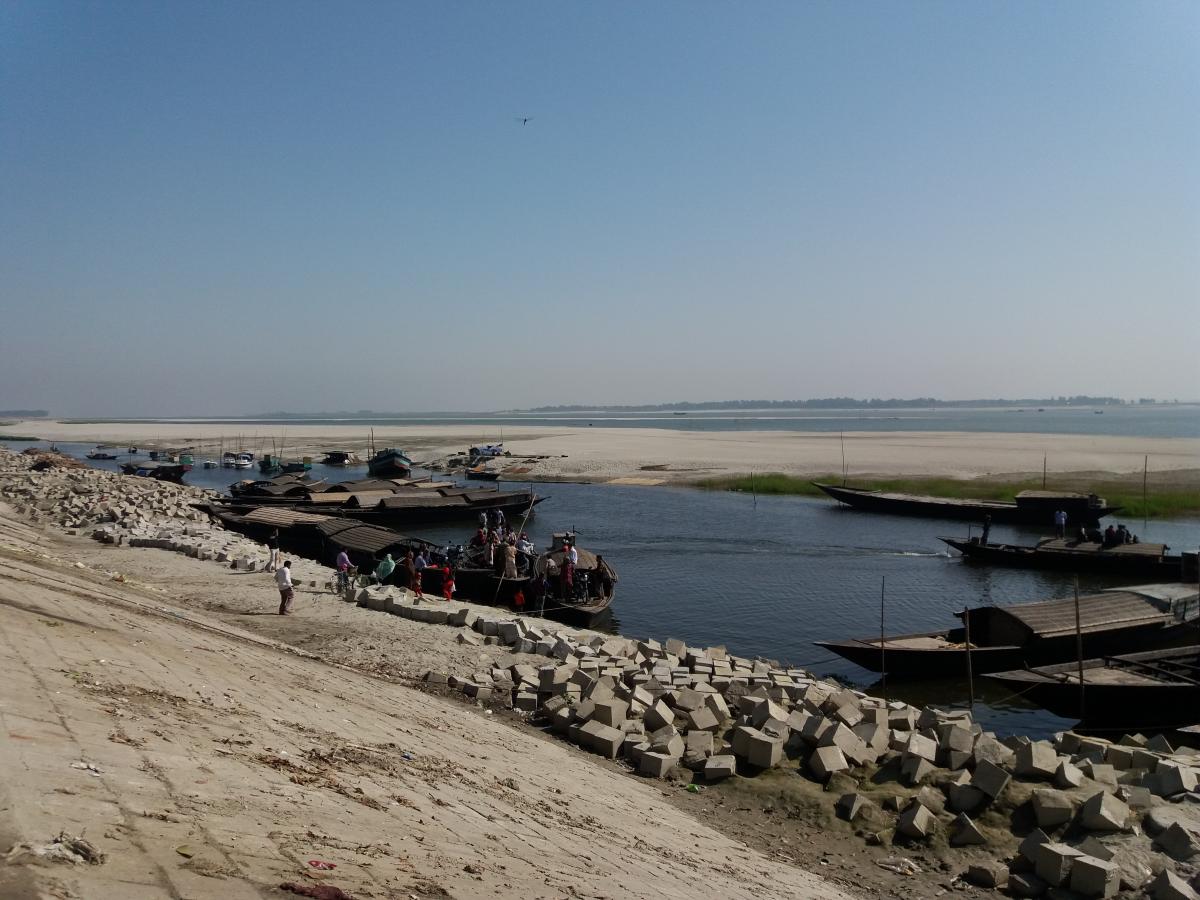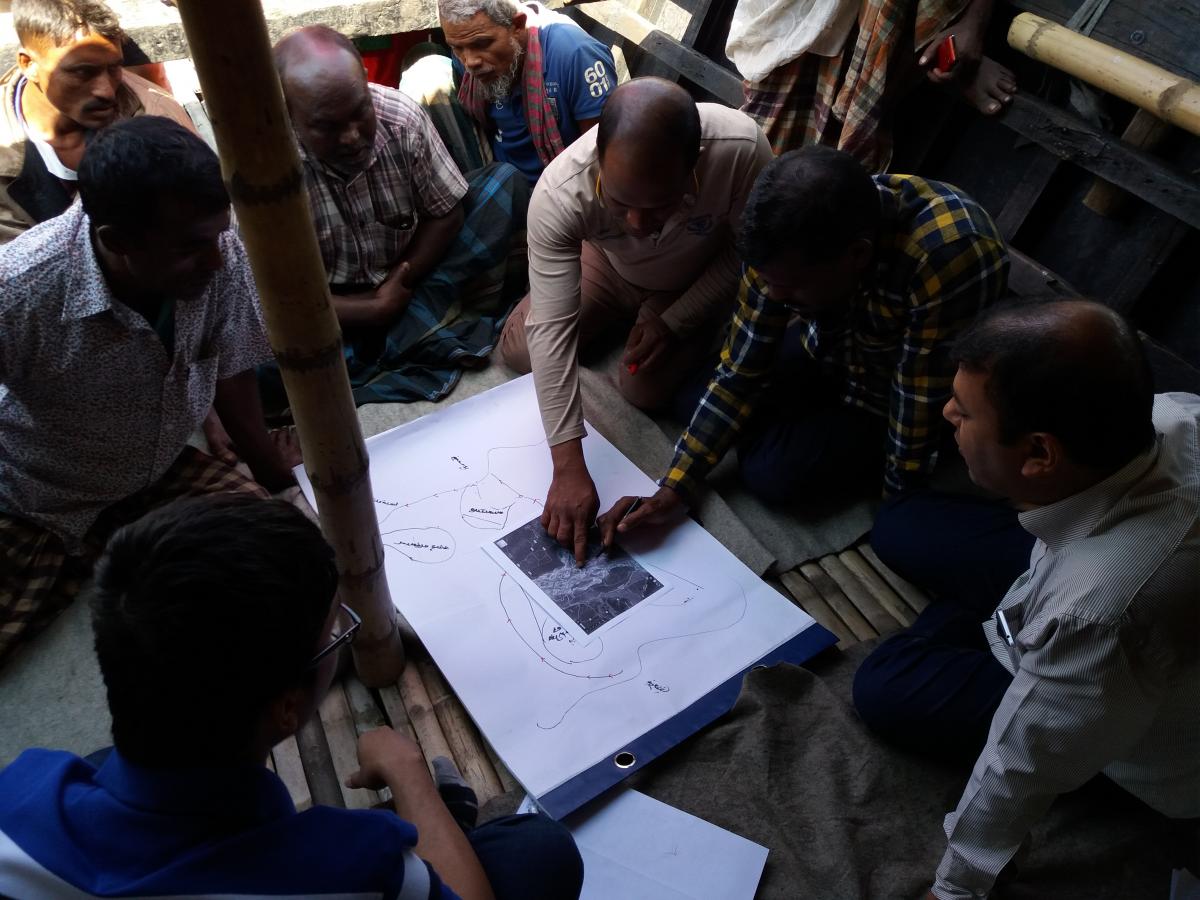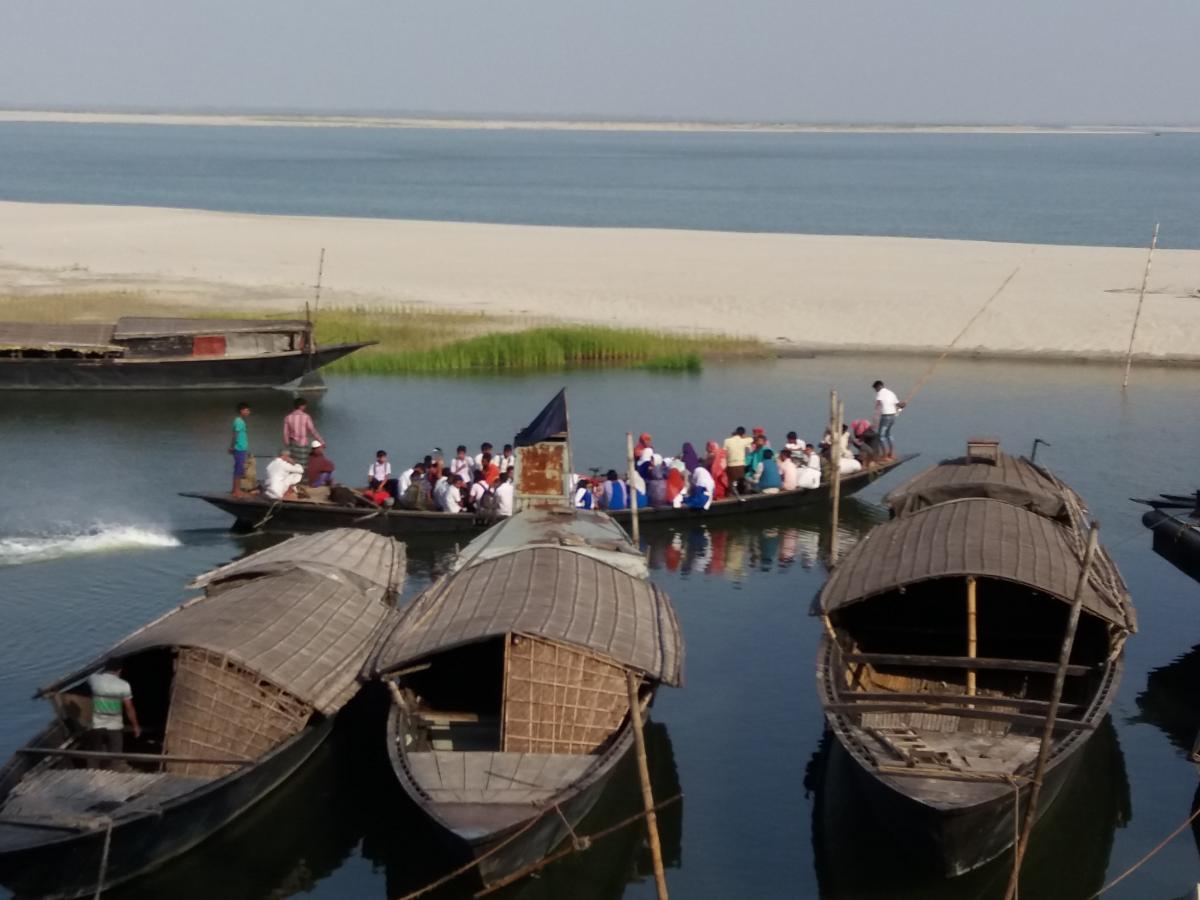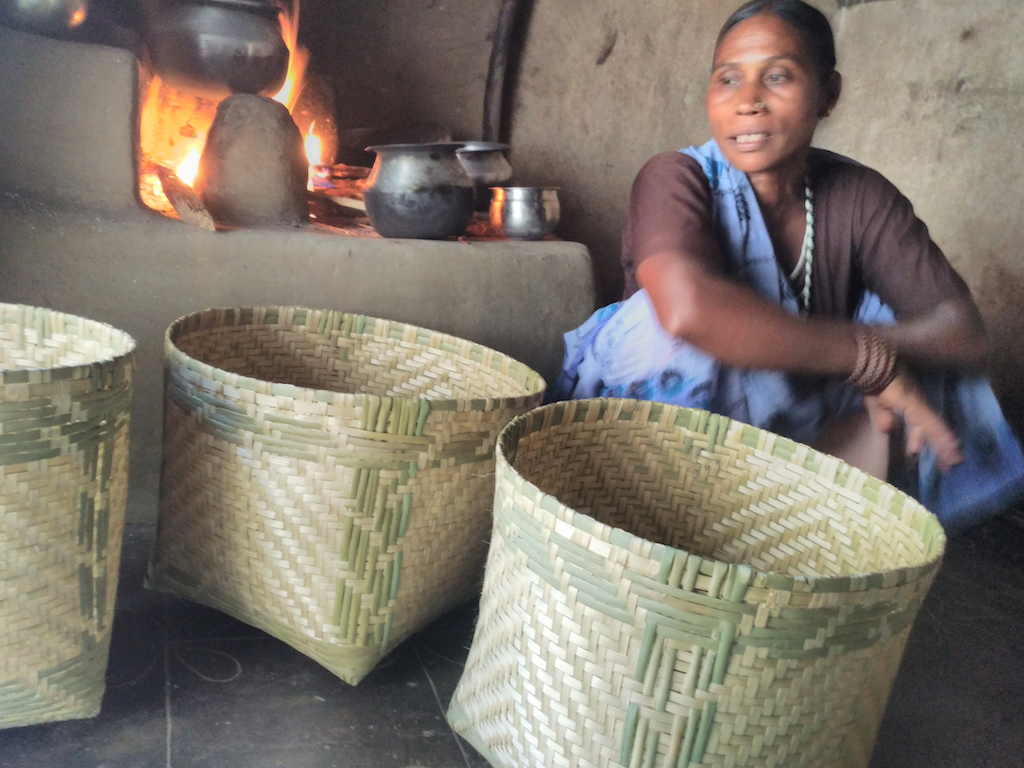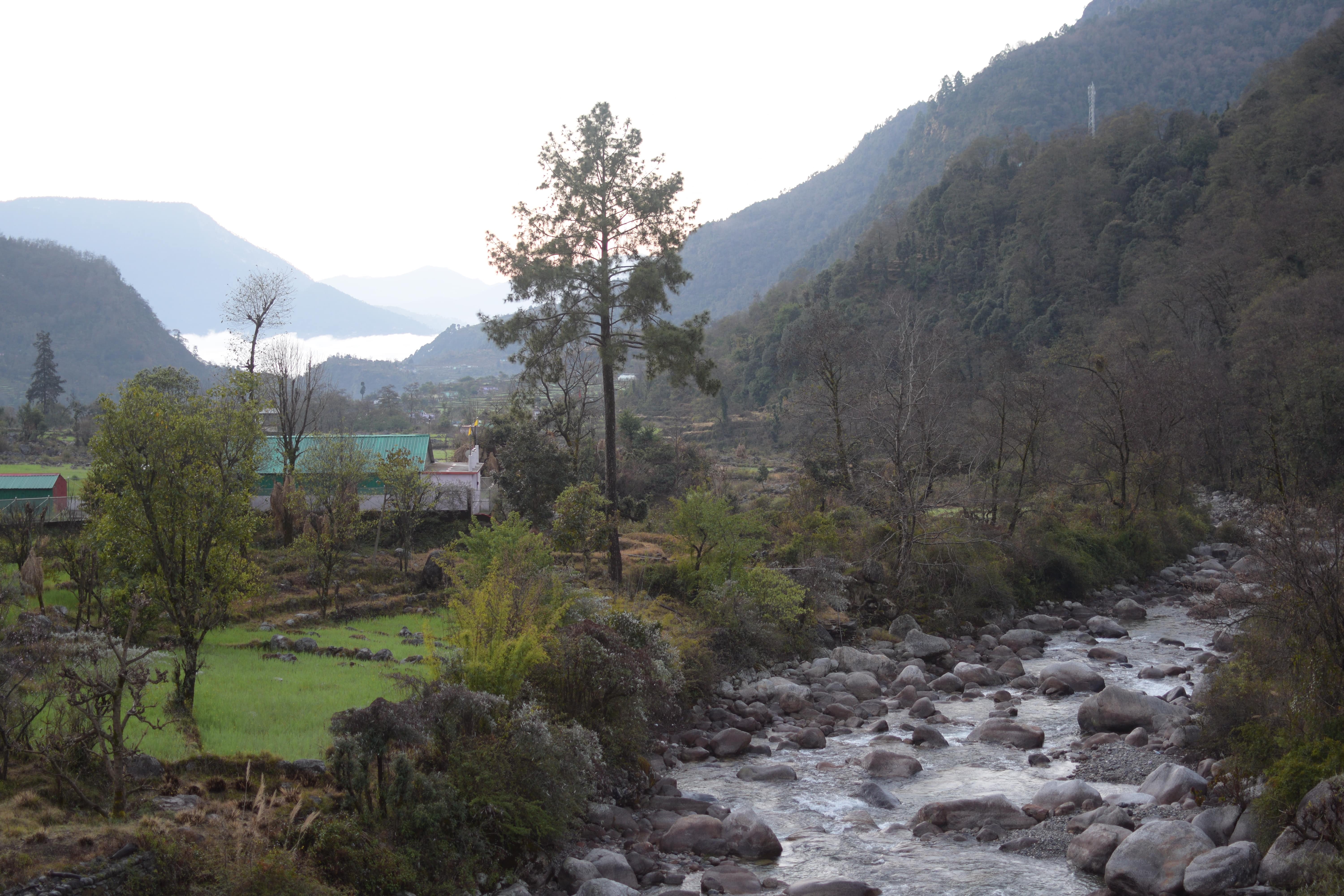Blog: Chilmari River Port of Bangladesh − A Case of Heritage, Development Aspiration, and Transboundary Cooperation
Chilmari River Port, lying close to the international border with India, represents the riparian legacy of Bangladesh. Recent effort to bring back its former glory showcases the country’s development vision and transboundary cooperation, writes Haseeb Md. Irfanullah of IUCN Bangladesh.
Chilmari sub-district of northern Bangladesh lies on the west bank of the River Jamuna − as the River Brahmaputra is called after crossing the Bangladesh-India border. Only 20 kilometres away from the international boundary, Chilmari has a long heritage of being an important river port of the north.
Over the past three decades, that legacy has been fading because of aggressive river-bank erosion and the silted up river bed. During this time, this mighty, 10 kilometres-wide river, mosaicked with numerous riverine sandbars (char), has engulfed three unions. (A union is the lowest local government unit in Bangladesh consists of around 20 villages). A vibrant port and commercial hub even in the 1980s, Chilmari now struggles to keep its channels navigable for vessels in non-monsoon months.
Bringing back the glorious past
A year ago the government declared the revival of Chilmari River Port, a long-standing demand of the people of Kurigram district.
This declaration came against the backdrop of some significant positive changes in recent years. Kurigram has often been in national discourses for being extremely vulnerable to floods from upstream waters, for destructive river-bank erosion, and for being one of the poorest areas of the country suffering from monga – identified by severe seasonal poverty and hunger.
The extreme poverty situation has now improved significantly. The Ramna Ghat area, the site for Chilmari River Port, is now protected with a concrete embankment. On 6 June 2015, Bangladesh and India signed the Protocol on Inland Water Transit and Trade (PIWTT) where Chilmari has been identified as Bangladesh’s port of exit (Routes 1 and 7) and entry (Routes 2 and 8), out of eight identified routes, and is also a recognised bunkering point for cargo vessels.
As the Chilmari River Port represents an exciting blend of heritage, development aspirations, and transboundary cooperation, an IUCN team recently visited the area and explored its people’s perceptions, expectations, and concerns over this proposed rejuvenation of the port.
People’s perspectives
The local community, businessmen, civil society organisation representatives, people’s representatives, and political leaders were enthusiastic about the resurrection of the river port in Chilmari, as were the people working at the Ramna Ghat. They expected improved local employment both during its construction and operation phases. Chilmari town is expected to become a commercial hub, with business opportunities for the local communities. Development of new, improved facilities, like road communication, transport system, housing, and other amenities, were expected as well. Local government institutions anticipated higher revenues from an active port.
In recent years, Indian cargo vessels cross Chilmari as per the PIWTT, a few per month in the monsoon. Chilmari is, however, currently not a Port of Call, but provides customs clearance only. People working at the port strongly believe that without becoming a Port of Call, with cargo loading and unloading facilities, Chilmari River Port would be incomplete. A full-fledged port, as envisaged by the government, may qualify Chilmari to become a Port of Call under the protocol with India and may help exporting local goods, like jute, cement, and fertilizer, which are in demand in India. It would further facilitate Chilmari’s connection with Payra Sea Port at Patuakhali of Bangladesh.
As re-establishing the Chilmari River Port slowly progresses, some concerns were also shared by the local people. Many river erosion-affected families were living in and near the proposed port area, which is mostly government-owned land. Eviction and proper rehabilitation of these families was a major concern expressed by the fisher families and the local government representatives of Ramna alike.
Given the dynamic nature of the River Jamuna, maintaining necessary draft in the channels is a crucial challenge to keep the port active. Currently, the Bangladesh Inland Water Transport Authority (BIWTA) dredged channels temporarily to make ways for larger vessels. But capital dredging is a must. Given the huge amount of silt entering Bangladesh every year, it seems to be an action required at regular intervals.
People also expect tension on the water, between fishermen and large cargo vessels, and on the land, among locals and outsiders, which is currently absent due to limited operation of the port.
As the port re-establishment continues, it is important that concerned government agencies and civil society organizations engage local people in the discussion, through public hearing and other means, so that their expectations and concerns are properly heard and appropriate measures are taken to attend to them.
Beyond the borders
As IUCN publishes this post, more than one-third of Bangladesh and many parts of Nepal and India in the Ganges-Brahmaputra-Meghna (GBM) River Basin are flooded, affecting almost 41 million people. Chilmari has been severely affected.
Despite causing frequent distress and destruction, the River Brahmaputra remains an integral part of the lives of its basin, binding Bangladesh, Bhutan, China and India together. It shapes their individual development aspiration and also bilateral and regional cooperation.
Although investing in Chilmari River Port showcases Bangladesh’s development vision, its role in transboundary cooperation is invaluable. In recent years, several initiatives have been seen on transboundary water cooperation bringing policy-makers, civil society organisations, and academics together to understand pertinent issues and influencing factors, to share data and information, and to implement collective actions.
It is now becoming increasingly important that the people’s voice is heard in transboundary water cooperation discourses, and grassroots diplomacy makes its mark on regional water governance efforts in the GBM River Basin.
This blog post was written by Haseeb Md. Irfanullah [@hmirfanullah], Programme Coordinator, IUCN Bangladesh Country Office. He and Enamul Mazid Khan Siddique [@enamul_mazid], former Programme Officer at the country office met the people of Chilmari in mid-March 2017 as a part of the BRIDGE-GBM Project of IUCN.
